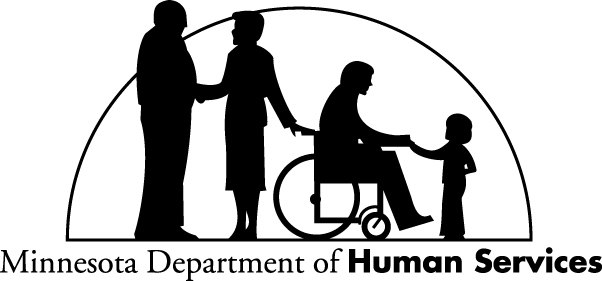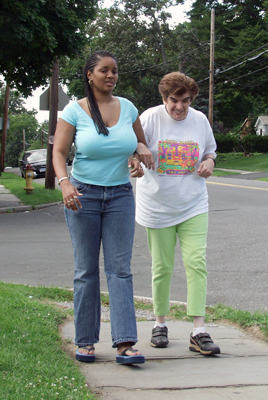Lesson #4: Roles of Professionals in the PSR
Lesson #4: Roles of Professionals in the PSR

Lessons in the PSR Course:
There are five lesson in this course.
- Introduction to the Positive Supports Rule (PSR)
- Positive Support Strategies and Person-Centered Planning
- Prohibited and Allowed Procedures in the PSR
- The Roles of Professionals in the PSR
- Documentation and Reporting in the PSR
Lesson #4 Description and Learner Objectives
Lesson #4 Description: Supporting people with behavior that interferes with their ability to live and work in the community can be difficult. It requires competent and committed professionals in order for people to be successful in changing the way they get their needs and wants met. This lesson provides an overview of the standards and expectations for professionals doing this work.
After completing this module, you will be able to:
- Describe who is a “qualified professional” for the purpose of their license as defined by the PSR.
- Identify the assessment and training requirements laid out by the PSR.
Seeking Additional Help To Support People

A functional behavior assessment is a critical component to understanding the function an interfering behavior serves for the person. It is a way of figuring out why behaviors occur--specifically, what conditions are in effect before the interfering behavior happens, and what outcomes the interfering behavior produces that gives it a reason to keep occurring again and again.
A Functional Behavior Assessment and PS Plans
An assessment that operationally defines interfering behaviors, identifies the situations in which the interfering behavior is likely to occur and not occur, and generates a hypothesis of why the behaviors occur.
This must be conducted by a qualified professional.
It must also consist of direct observation of all of the following elements:
- biological factors
- psychological factors
- environmental factors
- quality of life indicators
Qualified Professionals and Professional Standards
- It’s important to know that in the PSR the definition of a “qualified professional” varies depending on the license, according to the PSR. Each provider must review the rule and know which professional is qualified to complete assessments and develop treatment plans for the license.
- In addition to professional qualifications, there is an expectation that the professional is competent to develop plans, meet necessary experience requirements, and use commonly known, peer reviewed, evidence-based or otherwise generally accepted professional standards to perform this work.
Click here to read the actual text of the PSR and find qualified professionals by license
Professional Duties of Supervisors and Managers
While each employee must be competent, supervisors and managers must set the tone and provide resources for other staff. Below are core responsibilities:
- Identification of other qualified professionals to help with understanding interfering behavior and developing individualized, strength-based positive support strategies
- Know when to consult with external qualified professionals
- Knowing what is required by the rule and developing policies and practices to support compliance
- Ensuring staff have access to training and determine their competence
- Ensuring accurate and required record-keeping is completed
Who Must Complete Core Training Requirements
Applies to Staff who:
- Develop
- Implement
- Monitor
- Supervise, or
- Evaluate positive support strategies, PSTPs or EUMR
Core Training Expectations
All professionals who are part of supporting people who engage in interfering behavior must have eight hours of training before assuming these responsibilities. The training must cover the following topics. Each person must also demonstrate competency in applying the knowledge they gain in the training.
- De-escalation techniques
- Principles of person-centered service planning & delivery
- Positive support strategy principles
- What constitutes use of restraint, time out and seclusion
- Safe and correct use of EUMR
- Restrictive, prohibited, restricted and permitted procedures
- Situations when 911 should be called
- Procedures and forms related to rule
- Notification procedures for use of restrictive interventions
- Understanding of person and how to implement person’s plans
- Cultural competence
- Staff accountability & self-care strategies
Function-Specific Training
Staff who develop positive support strategies & executives, managers and owner in non-clinical roles
- Complete 4 additional hours of training
- Functional behavior assessments
- How to apply person-centered planning
- How to design and use data systems to measure effectiveness of care
- Supervision
- How to train, coach and evaluate staff and
- Encourage effective communication with the person and the person’s support team
License holders, executives, managers and owners in nonclinical roles
- Complete additional 2 hours of training
- How to include staff in organization decisions
- Management of the organization based on person-centered thinking and practices
- Evaluation of organizational training as it applies to measurement of behavior change and improved outcomes for persons receiving services
Many of these topics and those on the previous page are covered in courses available through DirectCourse.
Determining Staff Competence
- Determining staff competence to perform duties is more than sending them to training. It includes:
- Clarifying expectations.
- Demonstrating and modeling. Practicing and role-playing as a team.
- Observing staff performance and providing feedback and support.
- Providing job aides (tools where the person can quickly refresh on skills when supervisors or mentors are not available).
- Seeking other validation of competence (quality of documentation, report of others, review of incident reports and debriefing, ongoing observations).
- Having someone “on-call” who is competent and can mentor when a person is learning skills.
Lesson #4- Check Your Understanding & Review
-
According to the Positive Supports Rule, functional behavior assessments must also include assessment of biological, psychological, environmental, and quality of life factors influencing behavior.
- [correct] True
- False
-
Every staff member who implements positive support plans must complete function-specific training.
- True
- [correct] False
-
The Positive Supports Rule requires that all professionals have competence in their roles.
- [correct] True
- False
-
Executives, owners and managers of providers must complete only the core training as described in the Positive Supports Rule.
- True
- [correct] False
Lesson #4 Conclusion
- Functional behavior assessment is a process of carefully looking at behavior to understand what the person gets out of the behavior. It is most valuable when done in the context of a careful review of the person’s physical and mental health, environmental variables and overall quality of life, such as is required by the Positive Supports Rule. This information can be used to help adjust environments and support the person in gaining new skills.
- Professional qualifications for writing positive support plans vary depending on the license held by the service provider. However, all professionals involved in planning or services must be competent and follow establish professional standards for supporting people with these needs.
- There is eight hours of core training required for anyone who develops, implements, monitors, supervises or evaluates positive support strategies. Additional function specific training is required for professionals in certain roles.
There is a test linked to this lesson. You must take the test to receive credit for completing the lesson. Once you have finished reviewing this lesson, close the pop-up window and go back to your lesson assignment list. Then click on the title of the lesson you just completed, you will be taken to the welcome page again. A blue button "Take the Test" will have appeared. Click on it to take the test. Once you complete, submit, and pass the test, the lesson will be credited as complete.